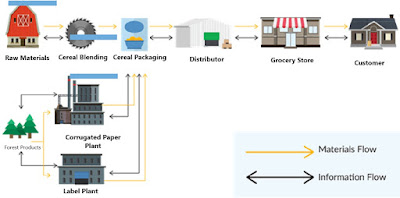Supply Chain
A supply chain is a network of individual functions within an organization that begins with the development of a strategic plan and ends with the delivery of a product or service. Those functions are listed below:
- Demand Planning
- Supply Management and Procurement
- Inventory Management
- Warehousing Operations
- Manufacturing and Service Operations
- Transportation Operations
- Customer Service Operations
A supply chain is a network of individual functions within an organization that begins with the development of a strategic plan and ends with the delivery of a product or service. Those functions are listed below:
- Demand Planning
- Supply Management and Procurement
- Inventory Management
- Warehousing Operations
- Manufacturing and Service Operations
- Transportation Operations
- Customer Service Operations
Inventory Management
Inventory management is an important function to control assets in the supply chain. Individuals working in the supply chain should have an understanding of the roles, costs, and benefits of inventories. Inventory is often obtained from suppliers in the form of raw materials and other goods and materials as a result of POs placed by the procurement department. Inventory also comes in the form of work in process and finished products from manufacturing operations.
It may seem obvious that inventory is controlled and managed in a warehouse because this is where the majority of inventory is physically stored. However, the management of inventory, or inventory management, is a function that actually involves the entire supply chain.
Inventory management starts with close integration with demand planning and continues until products are successfully delivered to customers. Inventory management is the process of controlling and managing goods, materials, and products to maximize efficiency and profitability. It controls how efficiently resources are utilized in producing products and services for customers. Inventory management systems and personnel interact with warehousing, transportation, demand planning, procurement, and other personnel throughout the company.
Companies continually strive to reduce their inventory levels as one approach to reducing operating costs and increasing competitiveness. Inventory costs are often one of the largest cost elements in an organization. Inventory management systems are generally part of a broader company-wide ERP system that monitors inventory availability at all levels from raw materials to finished goods.
Reference: Warehousing Operations Certification Track. LINCS in Supply Chain Management Consortium. May 2016. Version: v2.22. www.LINCSeducation.org.
Fahad Mahmud
Lecturer (Technical), Department of textiles at SKTEC
Texpedi.com






1 thought on “Inventory Management | Functions of Supply Chain”